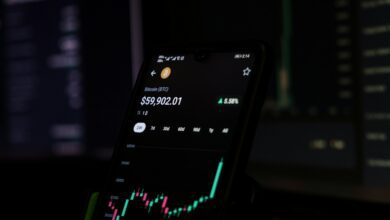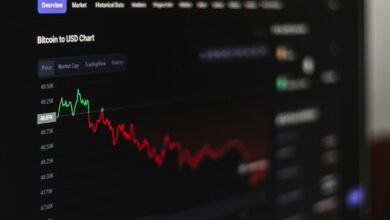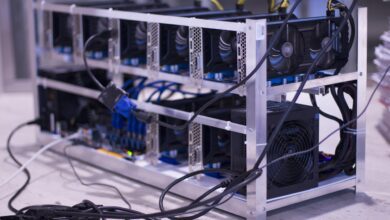Tokenized commodities – digital resource investments

Investing in tokenized assets backed by agricultural products, oil, and gold offers direct exposure to tangible materials while enhancing liquidity and transparency. These digital representations eliminate traditional barriers such as storage costs and limited market access, enabling fractional ownership that broadens participation beyond institutional investors.
Current market data reveals that tokenized versions of precious metals like gold maintain tight correlation with spot prices, providing a reliable hedge against inflation. Simultaneously, tokenized oil contracts offer flexible entry points for traders seeking exposure without the complexities of futures markets. Agricultural tokens, representing crops like wheat and soybeans, capitalize on growing demand for alternative investment vehicles amid global supply chain volatility.
Regulatory frameworks are evolving rapidly to accommodate these asset-backed tokens, with jurisdictions implementing clear guidelines to protect investors while encouraging innovation. This legal clarity is critical for integrating tokenized holdings into diversified portfolios alongside equities and bonds. For wealth managers, incorporating these instruments requires assessing counterparty risk and evaluating underlying asset verification mechanisms to ensure authenticity and value preservation.
Tokenized commodities: digital resource investments [Digital Finance digital-finance]
Utilizing blockchain technology for the fractional representation of physical goods such as oil and gold has introduced an innovative class of asset allocation. By converting tangible assets into cryptographically secured tokens, investors gain access to previously illiquid markets with enhanced transparency and reduced entry barriers. This transformation allows participants to hold precise shares of high-value materials without the complexities of storage or transportation.
Crucially, tokenized versions of agricultural products offer diversification beyond traditional portfolios. For example, grains like wheat or corn can be represented on distributed ledgers, enabling streamlined settlement processes and reducing counterparty risk. The immutable nature of blockchain records facilitates auditability while maintaining compliance with evolving regulatory frameworks across jurisdictions.
Technical and Market Considerations in Asset Digitization
The process involves creating a cryptographic proof of ownership linked to a verifiable physical inventory. In the case of oil reserves, smart contracts govern transactions ensuring that each token corresponds to a specific volume stored under regulated custody. This mechanism mitigates risks associated with fraudulent claims and price manipulation commonly observed in spot markets.
Gold-backed tokens have demonstrated resilience amid volatile economic conditions, often mirroring bullion market movements with minimal slippage. Platforms leveraging secure vaults audited by third parties provide confidence in redemption capabilities, establishing trust in token holders’ rights over actual metal holdings. Such implementations enable instantaneous transfers globally while preserving intrinsic asset value.
Agricultural tokens present unique challenges related to perishability and quality assessment. Blockchain-enabled supply chain integration addresses these issues by incorporating sensor data and provenance tracking from farm to consumer. This synergy between IoT devices and ledger entries ensures authenticity, reduces fraud potential, and supports fair pricing mechanisms influenced by real-time environmental factors impacting harvest yields.
The adoption of asset digitization models is further propelled by regulatory clarity emerging in key financial hubs. Jurisdictions endorsing security token frameworks create conducive environments for institutional participation while safeguarding investor interests through mandatory disclosures and anti-money laundering protocols. Consequently, capital flows into these sectors are expected to increase steadily as confidence builds around custodial solutions and legal enforceability.
How to Buy Tokenized Commodities
To acquire tokenized assets representing tangible goods such as agricultural products or crude oil, begin by selecting a reputable blockchain platform that specializes in asset-backed tokens. Platforms like OpenSea, Binance Smart Chain, or specialized commodity token issuers provide transparent marketplaces where fractional ownership of these assets can be purchased securely. Ensure the chosen platform complies with relevant financial regulations and offers verified proof of reserves to confirm the linkage between tokens and the underlying physical goods.
Next, set up a compatible cryptocurrency wallet that supports the specific blockchain standard used by the asset tokens (commonly ERC-20 or BEP-20). Wallets such as MetaMask or Trust Wallet offer user-friendly interfaces and robust security features necessary for managing these holdings. After funding your wallet with an appropriate cryptocurrency–often Ether or Binance Coin–you can initiate purchases directly through decentralized exchanges or proprietary marketplaces hosting these tokenized derivatives.
Verification and Due Diligence
Before proceeding with acquisition, conduct thorough due diligence on the origin and management of the asset representation. Agricultural produce tokens, for instance, should be backed by verifiable supply chain audits confirming crop quantities and quality standards. Similarly, oil-backed tokens must reference reserves held in certified storage facilities with transparent reporting mechanisms. Independent third-party verifications and blockchain-based smart contracts play critical roles in mitigating counterparty risks associated with these alternative asset classes.
- Review whitepapers and technical documentation outlining token issuance protocols
- Examine audit reports validating collateral backing
- Assess liquidity pools and market depth for efficient trading possibilities
Several projects offer real-time tracking data integrated within their blockchain networks enabling investors to monitor fluctuations in commodity quantities or condition metrics tied to their holdings. Such transparency is crucial when dealing with perishable agricultural goods versus more stable hydrocarbon-derived assets.
Transaction execution involves interacting with smart contracts governing token minting, transferability, and redemption rights. Advanced platforms often incorporate decentralized finance (DeFi) functionalities allowing holders to stake tokens for yield generation or swap them across various chains via cross-chain bridges. Understanding gas fees associated with transaction confirmation on respective blockchains is essential to optimize cost-efficiency during acquisitions.
Finally, consider portfolio diversification strategies combining multiple categories of tangible goods representations to hedge against sector-specific volatility. For example, coupling exposure between agricultural commodities like wheat or soybeans alongside oil-linked instruments can balance supply-demand dynamics influenced by seasonal cycles and geopolitical tensions. Staying updated on regulatory frameworks affecting token issuance standards remains imperative as jurisdictions evolve their stance towards digitally represented tangible assets.
Risks in Commodity Token Investments
Investors should prioritize thorough due diligence when engaging with asset-backed tokens representing commodities such as oil or gold. These tokens often claim to provide a fractionalized representation of physical goods, yet the underlying custody and verification mechanisms can vary significantly. For instance, discrepancies in storage audits or third-party custodial reliability may lead to token devaluation if the physical commodity is not adequately secured or verified. This counterparty risk remains a critical vulnerability, especially for tokens linked to agricultural products stored under variable environmental conditions.
Market liquidity is another significant challenge in this niche. Unlike traditional commodity markets, where futures and spot trading volumes are substantial, tokenized versions frequently exhibit reduced trading activity and wider bid-ask spreads. Such illiquidity can amplify price volatility and complicate exit strategies during market downturns. For example, tokens backed by rare metals like palladium might suffer from thin order books on decentralized exchanges, increasing slippage costs and potentially impairing portfolio rebalancing efforts.
Technical and Regulatory Vulnerabilities
From a technological standpoint, smart contract flaws present systemic risks that may lead to loss of capital or compromised token functionality. Coding errors or security breaches could disrupt asset redemption processes or enable unauthorized token minting. A notable case involved a gold-backed token project where an exploit allowed malicious actors to manipulate ownership records temporarily, causing short-term market confusion and undermining investor confidence. Moreover, regulatory ambiguity persists across jurisdictions concerning classification and compliance requirements for these instruments. Shifts in policy–such as enhanced Know Your Customer (KYC) protocols or restrictions on commodity derivatives–could restrict market access or impose additional operational costs.
Price discovery for these blockchain-based representations also warrants scrutiny. While some platforms peg their tokens closely to spot prices of crude oil or precious metals through algorithmic models or oracle feeds, latency and data source integrity issues may cause pricing discrepancies. Agricultural product tokens face even greater complexity due to seasonal variations and supply chain disruptions influencing real-world valuations. Investors must assess whether the pricing mechanisms incorporate real-time market data effectively and consider potential arbitrage opportunities arising from asynchronous information flows between traditional exchanges and blockchain networks.
Regulations Affecting Tokenized Assets
Legal frameworks governing the representation of physical goods such as gold and oil in blockchain form are rapidly evolving, with jurisdictions imposing stringent compliance requirements. Regulatory bodies typically classify these assets under securities or commodities laws depending on their structure and purpose, influencing how platforms must operate to offer fractional ownership or trading options. For example, the U.S. Securities and Exchange Commission (SEC) applies rigorous standards when token offerings resemble investment contracts, mandating registration or qualified exemptions to protect market participants.
Compliance demands extend to anti-money laundering (AML) and know-your-customer (KYC) procedures, which are critical for platforms issuing tokens backed by tangible materials. Failure to adhere can result in significant penalties or operational restrictions. The Financial Action Task Force (FATF) guidelines recommend transparency in transactions involving these units of value to prevent illicit financing, compelling issuers to implement robust identity verification protocols while maintaining transactional privacy within legal bounds.
Classification Challenges and Jurisdictional Variations
The categorization of token-based representations varies substantially across global markets, complicating cross-border transfers and custody solutions. In Europe, Markets in Crypto-Assets Regulation (MiCA) aims to standardize rules but still leaves room for national interpretations regarding asset-backed tokens linked to physical elements like precious metals or hydrocarbons. Contrastingly, Asian regulators often prioritize consumer protection over innovation incentives, resulting in more restrictive environments that may limit accessibility for international investors.
Such divergence necessitates careful structuring of offerings to align with multiple regulatory regimes simultaneously. Entities must assess licensing requirements–for instance, whether the issuance constitutes a collective investment scheme–and adjust governance models accordingly. This is evident in Singapore’s approach where tokenized shares representing refined materials require approval from the Monetary Authority of Singapore (MAS), emphasizing investor safeguards without stifling technological progress.
Technological Solutions Enabling Regulatory Compliance
Smart contract protocols increasingly incorporate automated compliance features that enforce regulatory mandates at the code level. Examples include transfer restrictions based on jurisdictional whitelist parameters and real-time reporting modules that satisfy audit trail obligations. Platforms dealing with tokens tied to extractive products like crude oil employ these mechanisms to ensure secondary market transactions remain within authorized boundaries while preserving liquidity.
Moreover, integration with decentralized identity systems enhances participant vetting processes, reducing friction while meeting stringent regulatory standards. This harmonization of technology and policy mitigates risks associated with fraud and market manipulation inherent in token-enabled fractional ownership models representing scarce physical assets.
Impact on Market Dynamics and Investor Access
Stringent oversight tends to increase operational costs but also bolsters confidence among institutional actors considering exposure through blockchain-based vehicles linked to real-world valuables such as bullion or energy commodities. Regulatory clarity encourages greater adoption by providing predictable legal recourse mechanisms and dispute resolution pathways. Conversely, overly burdensome rules risk excluding smaller investors due to heightened entry barriers imposed by mandatory compliance infrastructures.
This tension underscores the importance of balanced policymaking that supports innovation while maintaining systemic integrity. For instance, jurisdictions permitting regulated secondary markets facilitate price discovery for tokenized gold derivatives more effectively than those enforcing outright bans or ambiguous statutes.
Future Trends: Harmonization and Standardization Efforts
Efforts toward international harmonization are gaining momentum as stakeholders recognize fragmentation impedes scalability of asset-representative tokens globally. Organizations such as the International Organization of Securities Commissions (IOSCO) actively engage in developing principles tailored for blockchain-enabled instruments reflecting tangible holdings. Adoption of standardized disclosure norms and audit practices will likely reduce friction between domestic regulators.
Anticipated regulatory sandbox programs encourage experimentation under controlled conditions, providing empirical data supporting evidence-based rulemaking regarding complex asset classes including metal-backed tokens or energy-linked certificates issued on distributed ledgers. These initiatives aim to reconcile investor protection imperatives with technological advancement opportunities inherent in novel financial products replicating intrinsic value through cryptographic means.
Conclusion: Platforms for Trading Tokenized Commodities
Choosing platforms that offer secure and transparent representation of assets such as oil, gold, and agricultural products is imperative for sophisticated portfolio diversification. Protocols leveraging blockchain provide verifiable provenance and fractional ownership, enabling investors to access traditionally illiquid markets with enhanced efficiency and lower entry barriers.
Current market data reveals a growing preference for ecosystems integrating real-time settlement and compliance layers, which significantly mitigate counterparty risks. For instance, platforms utilizing smart contracts to automate delivery and custody processes demonstrate superior operational integrity compared to conventional exchanges, especially in volatile sectors like energy and precious metals.
- Oil-linked tokens: Benefit from dynamic pricing oracles that reflect spot market fluctuations with minimal latency.
- Gold-backed instruments: Employ cryptographic proof of reserves audited by third parties to ensure asset backing fidelity.
- Agricultural asset representations: Incorporate supply chain data analytics for accurate yield forecasts influencing token valuation.
The convergence of regulatory clarity–particularly in jurisdictions advancing frameworks around digital asset custody–and technological innovation accelerates institutional adoption. This fosters an ecosystem where liquidity pools expand beyond traditional commodity derivatives, introducing programmable financial products linked directly to physical inventories.
Looking ahead, interoperability standards between trading venues will be a key driver in scaling these platforms globally. Enhanced cross-chain functionalities promise seamless transferability of asset-backed tokens across diverse networks, reducing fragmentation risk. Moreover, integration of AI-driven predictive models could refine pricing mechanisms by factoring macroeconomic variables affecting raw material supplies.
Investors must critically evaluate platform governance structures, transparency of underlying asset audits, and the robustness of oracle systems that feed market data. Those prioritizing these technical dimensions will better navigate volatility inherent in sectors like hydrocarbons and agricultural yields while capitalizing on emerging opportunities offered by this novel form of asset digitization.






